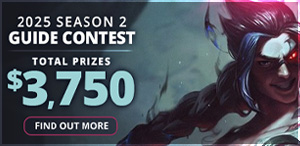This build has been archived by the author. They are no longer supporting nor updating this build and it may have become outdated. As such, voting and commenting have been disabled and it no longer appears in regular search results.
We recommend you take a look at this author's other builds.
- Diamond AP Kog'maw - Acid Reign [25.04]
- Diamond Jungle Malzahar - The Void's Legion [25.04]
- Diamond Support Orianna - Command: Support [25.04]
- Diamond Tank Karthus - Slow Death [25.04]
- Diamond APC-Bot / Support Vel'koz - Peer Review [25.04]
- Diamond Top Jinx - Zapper Trapper [25.04]
This guide has not yet been updated for the current season. Please keep this in mind while reading. You can see the most recently updated guides on the browse guides page
 Thank You!
Thank You!
Your votes and comments encourage our guide authors to continue
creating helpful guides for the League of Legends community.










 357,732
357,732
 15
15











 YouTube
YouTube

I consider scaling MR glyphs to be a reasonably common purchase, with scaling AD marks, scaling health seals and hp/5 quints being less common (The seals are debatable I suppose).
Total IP cost for the marks/seals/quints is 17220 IP.
However, when I look at other guides such as Orianna, Gnar, and Karthus, I noticed something similar. The chapters about The Author, Pros/Cons, Build Order, and Stage of the Game are all roughly the same length. The only chapter that changes in length significantly is the "What is X" chapter.
For those particular three, the amount of justification required for the build is quite long. It often requires explaining the tradeoff of utility for damage, or of sustained damage for burst, or of champion purpose. But for Support Olaf, that kind of nuance didn't readily exist. The primary justification for Support Olaf is that Olaf gains so many free stat bonuses that they are able to function without as much gold. But since the build is really similar to standard Olaf, minus the support item and Sighstone, there was not much left to elaborate on build-wise after establishing the concept.
A lot of the mastery choices are also pretty self-evident I feel. "Support Olaf solves the pain of diving by tailoring runes, masteries, and the initial build order for strong health regeneration, which is amplified further because of the enhanced healing to all sources that is granted by Vicious Strikes. This amplifier works on health regeneration from runes, Feast in the masteries, and even the Relic Shield procs." covers almost the entirety of chosen mastery/rune specs. Perhaps I should explain why Strength of Ages is more useful than Grasp of Undying though; that part isn't particularly self-evident.
Thanks for your thoughts! It articulated the initial criticism I had of my guide after I wrote it.
Ultimately I wouldn't fault anyone for going flat runes on this style. They're both, at the least, comparable if nothing else.
The new question becomes: is the extra gold advantage worth the early game tradeoff? It helps to look at where the runes intersect.
Attack Damage
Flat: 0.95 Attack Damage
Scaling: 0.14 Attack Damage per Level
Intersection: Level 7
Health
Flat: 8 Health
Scaling: 1.33 Health per Level
Intersection: Level 6
Magic Resist
Flat: 1.34 Magic Resistance
Scaling: 0.17 Magic Resistance per Level
Intersection: Level 8
The stats intersect at roughly level 7. Is the loss of early stats worth the bonus given later on?
My brief experience with Support Olaf said "yes". This is something experience would only show, but I found little trouble handily winning trades early on just from the sheer amount of health regeneration this build gives to Olaf, allowing them to easily heal up.
Additionally, bigger AD early on is more useful for champions with hefty burst (Talon, Zed) or with a sustain attack damage pattern in lane (Gnar, Garen, most ADCs). Support Olaf, by contrast, cares more about hitting then running repeatedly, especially earlier on when there's CC to prevent a sustained engage.
Once Support Olaf has the ultimate, they're finally able to stay engaged in combat, where raw health and raw AD become more meaningful. And handy that: at around Level 6 and Level 7 is when scaling overlaps with flat.
I hope this explains my rationale a bit more clearly!
Thanks for the kind words!